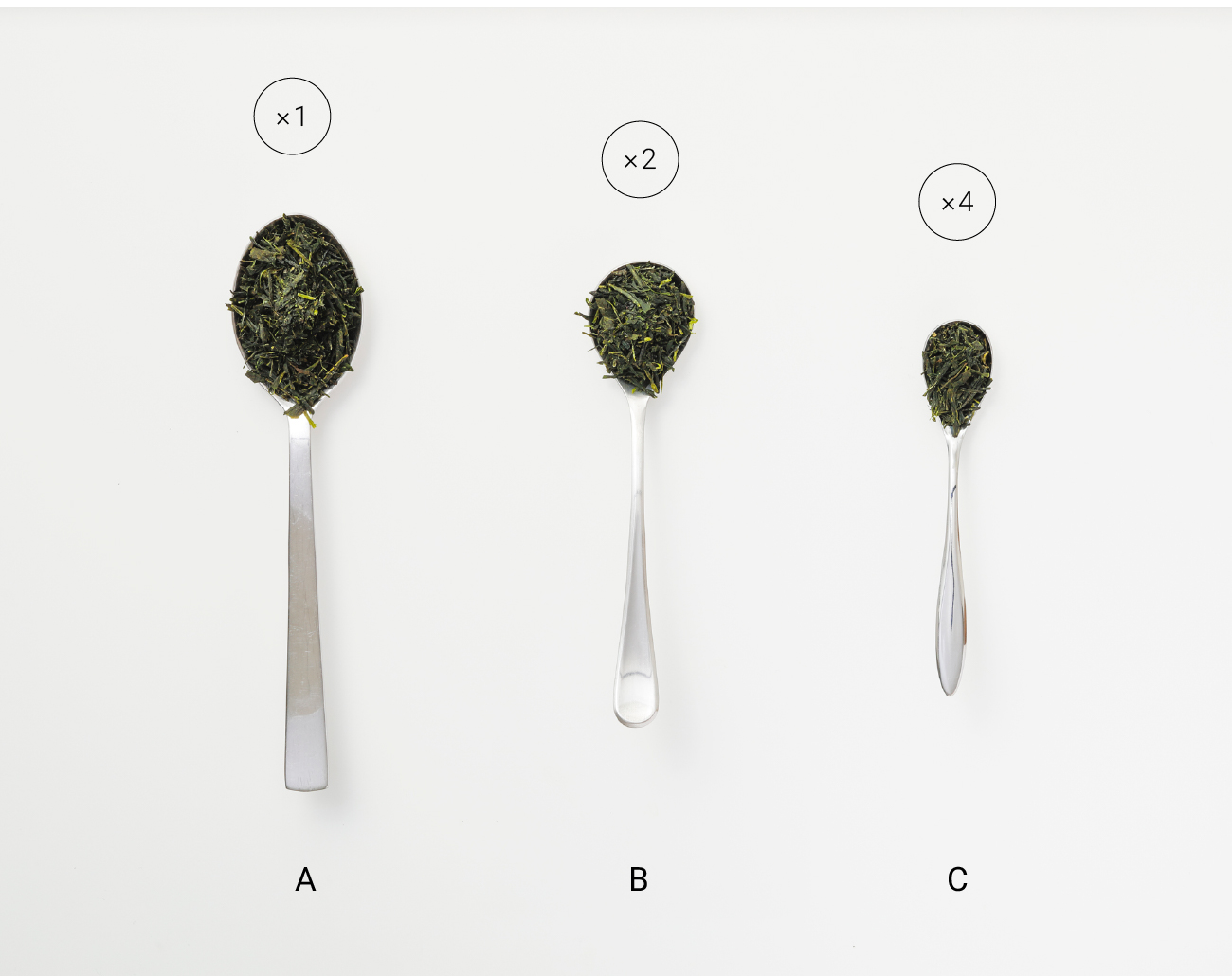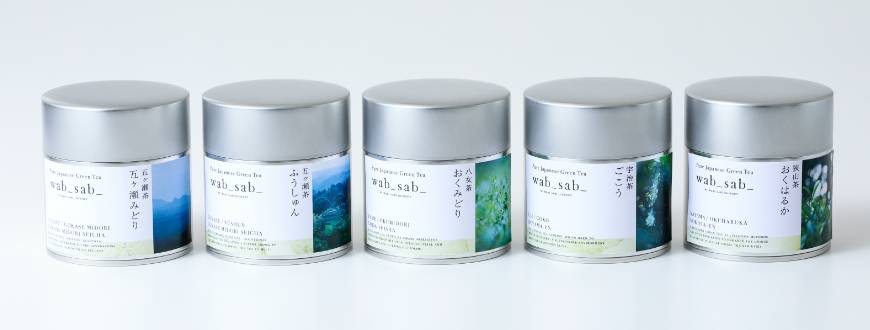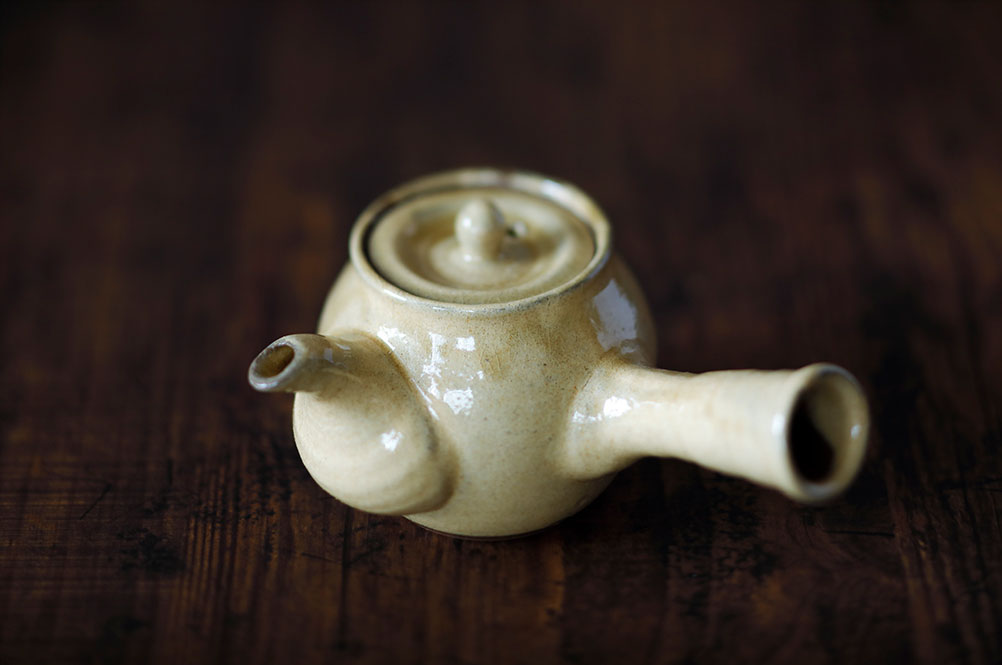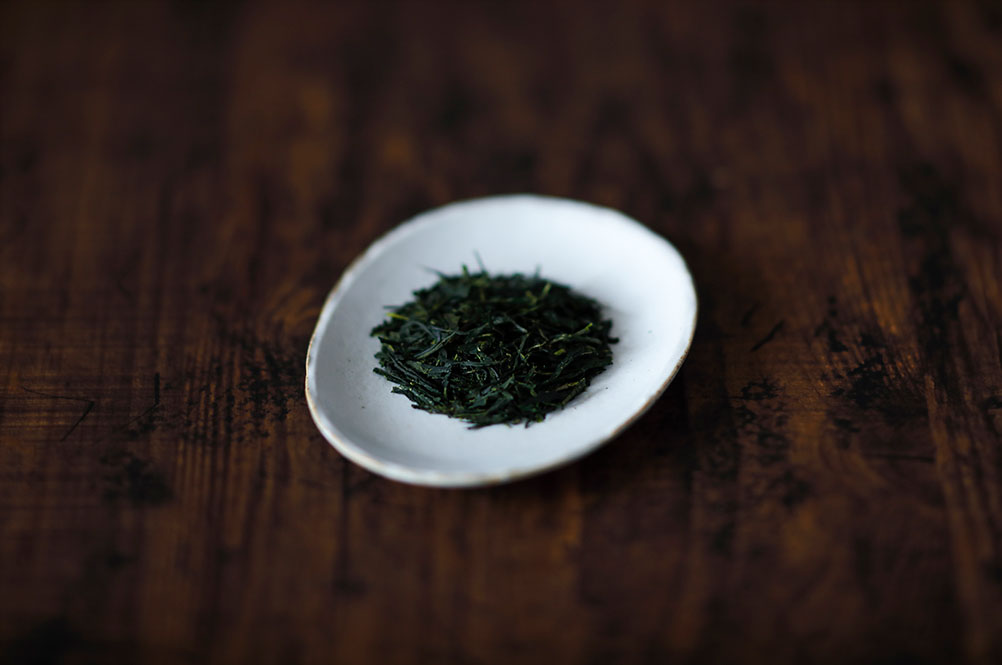Basic Knowledge of Tea
Learn about the teaware as well as the appropriate quantities of tea commonly used in Japan, and the relationship between taste and temperature.
What is a kyūsu teapot?
A kyūsu is a pot for brewing tea, and comes equipped with a tea strainer on the inside, which prevents tea leaves from getting into the teacup when pouring. In Japan, the most common type of kyūsu is the yokote type, which has a handle attached to the side (yoko) of the body. There are also other types of teapots that are convenient for left-handed people, such as the dobin earthenware teapot with the handle on top and the ushirote-gata teapot with the handle on the back.

What is a yunomi?
The word yunomi literally means a vessel for drinking hot water. The thicker the clay, the better it retains heat, and the harder it is to transfer heat to the outside so the hand holding the yumoni does not get hot, unlike cups made of porcelain – clay mixed with crushed stone – which are excellent conductors of heat. In Japan, pottery made from locally-sourced clay has been produced in various parts of the country since ancient times, and people enjoy using the unique colors and shapes of teacups from all over Japan as an integral part of their daily lives.
How much tea should I use?
Generally, we recommend using 3 to 5 grams of tea leaves per cup; double the amount in a teapot if you are brewing for two people. If you want a strong tea to wake you up, use more; if you want a refreshing tea with a meal, use less. Changing the amount of tea according to the occasion is another way to enjoy the “space” in the tea.
What a spoon looks like holding 4g of tea.
It can be difficult to understand when you are told 3-5 grams of tea leaves for one person – so to help you we tried to scoop out 4g of tea leaves with three different spoons found in a typical home.

Tablespoon.
A large spoon for eating meat, fish or soup dishes.
Dessert Spoon.
A medium-sized spoon that can be used to eat a variety of foods.
Teaspoon.
A small spoon used for coffee and tea.
The relationship between water temperature
and the taste and effects of the tea.
The higher the temperature of the water, the more bitter the tea becomes.
The lower the temperature, the more sweetness and umami are produced.
By changing the temperature of the water according to your mood or the occasion,
you can enjoy changing the flavor and effect of the tea.
Other to brew







